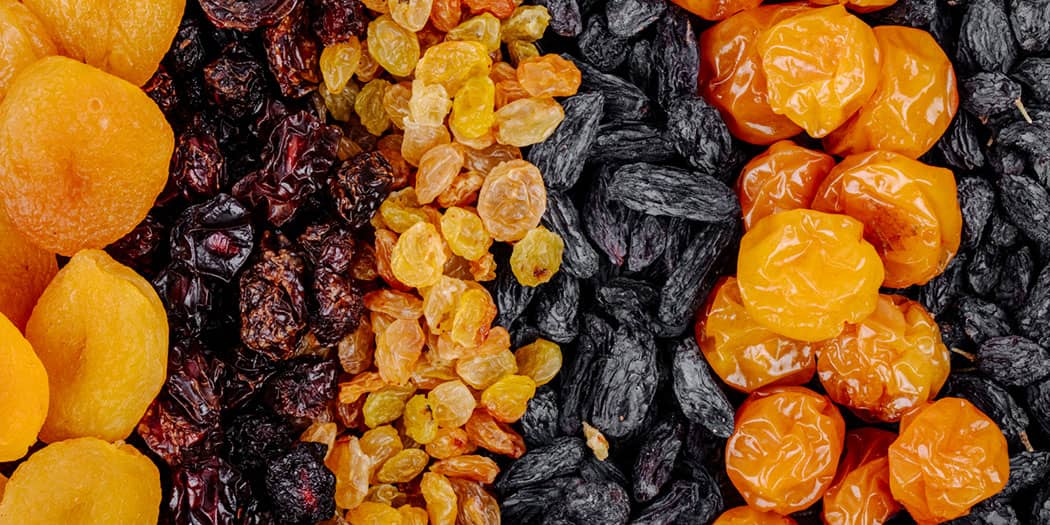On August 5, 2022, the European Commission published Regulation (EU) 2022/1370, amending Regulation (EC) No. 1881/2006, adding maximum levels (MLs) for ochratoxin A in certain foodstuffs.
Ochratoxin A is a mycotoxin naturally produced by fungi of the genus Aspergillus and Penicillium and is found as a contaminant in a wide variety of foods, such as cereals and cereal products, coffee beans, dried fruits, wine and grape juice, spices and licorice. Ochratoxin A is formed during the sun drying and storage of crops. Its formation can be prevented by applying good drying and storage practices.
Commission Regulation (EC) No. 1881/2006 [1] has already established maximum levels for ochratoxin A in certain foods. However, it must be considered that ochratoxin A has been found in foods for which no maximum level has been established yet and which contribute to human exposure to ochratoxin A. It is appropriate to set a maximum level also for these foods, such as dried fruit other than dried vine fruit, licorice products, dried herbs, ingredients for herbal infusions, oilseeds, pistachio nuts and cocoa powder. In addition, it is appropriate to lower the existing maximum levels of ochratoxin A in certain foods, such as bakery products, dried vine fruit, roasted coffee and soluble coffee. Therefore, Regulation (EC) No. 1881/2006 should be amended according to Regulation (EU) 2022/1370 [2] in Table 1.
Table 1 In section 2 of the Annex to Regulation (EC) No 1881/2006, entry 2.2 is replaced, as follows:
| Foodstuffs |
Maximum level (µg/kg) | |
| 2.2 | Ochratoxin A | |
| 2.2.1 | Unprocessed cereals | 5.0 |
| 2.2.2 | All products, derived/processed from unprocessed cereals, with the exception of foodstuffs listed in 2.2.3, 2.2.4, 2.2.5, 2.2.12 and 2.2.13 Cereals placed on the market for the final consumer | 3.0 |
| 2.2.3 |
Bakery wares, cereal snacks and breakfast cereals - Products containing at least 20% dried vine fruit and/or dried figs |
2.0 4.0 3.0 |
| 2.2.4 | Non-alcoholic malt beverages | 3.0 |
| 2.2.5 | Wheat gluten not placed on the market for the final consumer | 8.0 |
| 2.2.6 |
Dried fruit - Dried vine fruit (currants, raisins and sultanas) and dried figs |
8.0 2.0 |
| 2.2.7 |
Date syrup |
15 |
| 2.2.8 |
Roasted coffee - Soluble coffee (instant coffee) |
3.0 5.0 |
| 2.2.9 |
Wine (including sparkling wine, excluding liqueur wine and wine with an alcoholic strength of not less than 15% vol.) and fruit wine |
2.0 |
| 2.2.10 |
Aromatized wine, aromatized wine-based drinks and aromatized wine-product cocktails |
2.0 |
| 2.2.11 |
Grape juice, concentrated grape juice as reconstituted, grape nectar, grape must and concentrated grape must as reconstituted, placed on the market for the final consumer |
2.0 |
| 2.2.12 |
Processed cereal-based foods for infants and young children and baby foods |
0.50 |
| 2.2.13 |
Dietary foods for special medical purposes intended for infants and young children |
0.50 |
| 2.2.14 |
Spices, including dried spices, except Capsicum spp. |
15 |
| 2.2.15 |
Licorice (Glycyrrhiza glabra, Glycyrrhiza inflate and other species) |
|
| 2.2.16 |
Dried herbs |
10.0 |
| 2.2.17 |
Ginger roots for use in herbal infusions |
15 |
| 2.2.18 |
Sunflower seeds, pumpkin seeds, (water) melon seeds hempseeds, soybeans |
5.0 |
| 2.2.19 |
Pistachios to be subjected to sorting, or other physical treatment, before placing on the market for final |
10.0 |
| 2.2.20 |
Cocoa powder |
3.0 |
This amendment will enter into force on January 1, 2023. However, foods listed in the table that are legally marketed prior to January 1, 2023, may remain on the market until their date of minimum durability or use-by-date.
What do the changes mean?
This update has the potential to impact farms and food producers. The imported commodities of certain foodstuffs for the EU must not be found with ochratoxin A levels that exceed these MRLs. To ensure compliance with food safety regulations, food producers should seek professional advice.
SGS is committed to keeping you informed of regulatory news and developments. Leveraging our global network of laboratories and food experts, SGS provides a comprehensive range of food safety and quality solutions, including analytical testing, audits, certifications, inspections, and technical support. We continually invest in testing and state-of-the art technologies to help you reduce risk and improve food safety and quality. For more information, please visit our website: www.sgs.com/foodsafety.
Next step
THE REGULATION WILL BE IN FORCE ON JANUARY 01, 2023.
Naovarat Dachprasat
R&D Chemist, Food Technical Support Center
T: +66 2683 0541 ext. 2168, 2169
Read more articles SGS Hot Source
This site is SGS’s property. All contents such as website designs, text, and graphics contained herein are owned by SGS or licensed to SGS. The information provided by SGS on this site is for technical and general information purposes only and offers no legal advice. The information is no substitute for professional legal advice to ensure compliance with the applicable laws and regulations. All information on this site is provided in good faith “as is”, and SGS makes no representation or warranty of any kind, express or implied, and does not warrant that the information will be error-free or meet any particular criteria of performance or quality.





.webp?width=1644&height=1254&name=Food%20Safety%20Dashboard%201%20(1).webp)
